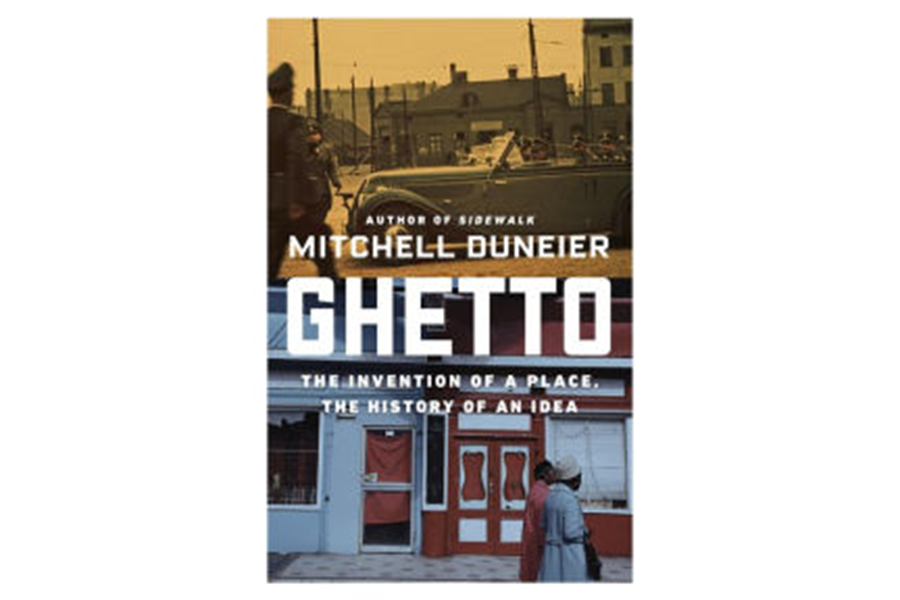'Ghetto' tells the 500-year history of the word and the institution
Loading...
Words carry baggage. Some just a daypack – Saturday: Old English Sætern(es)dæg, from the Latin Saturni dies, “day of Saturn” – others as encumbered as the silk-stocking crowd off on the Grand Tour. Ghetto is such a word. Ghetto is prismatic and has also traveled extensively, and flourished according to time and place: Venice, pre-war Warsaw, on the wings of Thelonious Monk, but always under a watchful, often menacing, eye. Lately, ghetto comes with plenty of duct tape. Those steamer trunks aren’t what they used to be.
Mitchell Duneier’s Ghetto is an arresting, listen-up synthesis of ghetto-living theory and practice over its 500-year history; particular emphasis is paid to the last century, when ghettoes shape-shifted with alarming speed. You emerge with an oh-so-better understanding of the forces that fashioned the ghetto. You will see the ghetto as a complex, dynamic organism, the ills of which will never surrender to a magic bullet, for the ghetto is a vivid expression of institutionalized racism, a rotten way of being in the world.
The story of the Venetian Jewish ghetto is an old one, but Duneier leaves few stones unturned: the evolving background and surrounding circumstances the ghetto took shape within will situate how we understand its mechanisms. In 1516, the Venetian senate, in response to the sentiments of powerful elements in town, required the Jewish population to reside on an island with a copper refinery (Il ghetto derived from gettare, the casting of metal). The gates would be open during the day; at night, they were closed. The Jewish community was physically restricted, but maintained their religious, educational, and social institutions. Still, ghettoes are ever and always precarious places.
“The pernicious circular logic of the ghetto is evident,” writes Duneier. “Isolation from mainstream society, as well as decrepitude caused by overcrowding, produced notorious conditions, behaviors, and traits that could be invoked to rationalize further negative attitudes and more extreme isolation.” So it went in Venice and Rome, Warsaw and Chicago, while each has its own story to tell.
Duneier tells these stories through the eyes and work of several important ghetto scholars and activists: Horace Clayton, Kenneth Cark, William Julius Wilson, and Geoffrey Canada. They are hardly alone. Louis Wirth, William Foote Whyte, St. Clair Drake, Gunnar Myrdal, Daniel Patrick Moynihan, Oscar Lewis, Albert Murray, Elliot Liebow, Carol Stack, Charles Murray, H. Rap Brown (briefly, unmistakably), Elijah Anderson – on and on, an incredible display of (mostly) original, sophisticated study, presenting arguments that needed to be addressed, the ever-finer tuning of visions, a heady bounty of thought that, taken as a whole, is dizzyingly panoptical.
It seems almost a crime that Duneier, professor of sociology at Princeton University, can write with lapidary compression – an extended prose poem – about such outrageous conditions. He has done so before, in two closely observed studies of urban life, "Sidewalk" and "Slim’s Table." He makes appropriate, choice use of quotes from his scholars, which salt the air with a particular time and place. He presents their work so that it can be chewed upon, then introduces their critiques.
The single-explanation schools are unripe, though not dismissible: Who would deny that restricted housing covenants were not elemental in the formation of ghettoes, that Clark’s new colonialism generated a new psychology of the ghetto (Clark, however, also being a multifactor man)? Or Canada’s appreciation that the introduction of guns undercut a stable, if rude, hierarchy, the toughs now “frivolous, irresponsible, inexperienced youths who had never developed the smarts that had one supported a rep on the streets”? Myrdal’s faith in the white ethical creed subduing white racism goes down in flames.
Duneier brings forth the ghetto as a place, with moments of flourishing even under the thumb of control. Bronzeville, in the South Side of Chicago, was full of cultural vigor, and served as a sharp expression of the color line at work and the color line in the neighborhood: Blacks wanted work and blacks wanted to expand out of a restricted area. As well, there is much to admire in the urbane street wisdom identified by Elijah Anderson. Living in the ghetto, you had to be intimidating enough to avoid victimization, yet not so scary as to cause white panic. “Black males had to master code-switching to survive on the street ... the phenomenon of ‘getting ignorant,’ whereby any black man could abandon his mainstream interactional style for a street orientation.”
There and so and well: “Unsurprisingly, this encapsulated history of the idea of the ghetto has not been uplifting,” except when it is. You disrespect some else’s neighborhood at your own risk, Duneier writes while asking, is it not true that Harlem, the South Side, and South Central would enjoy liberation from a condescending welfare system, the loss of its scant autonomy, the intrusive forms of control, restriction of space, social service disintegration, place-based policing, blockbusting and redlining, nonexploitive economic repression? How about racism? Yes, how about racism?








